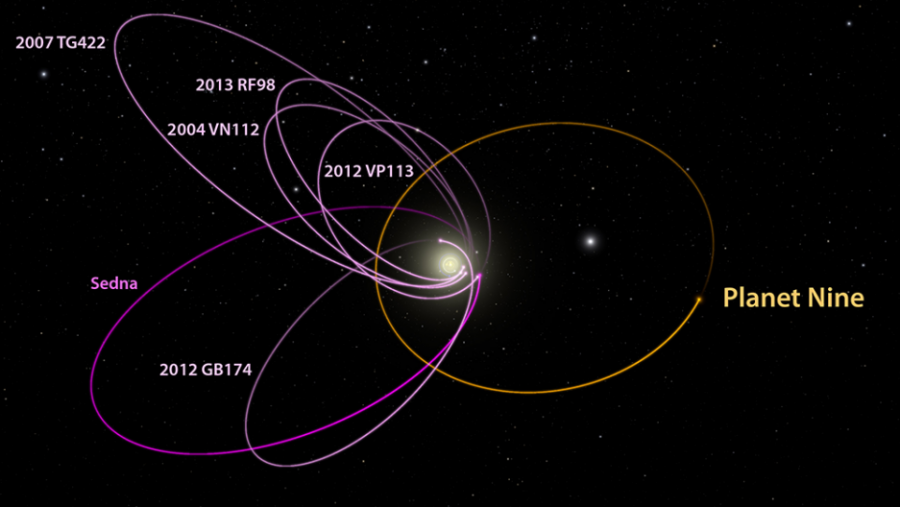Space, the final frontier. We’re not quite done with our solar system yet!
On Wednesday, January 20, two astronauts reported that they had clear signs of a planet traveling slowly behind Pluto. Astronomers observed that the half a dozen orbital bodies were seen moving in perpendicular motion around what they theorized to be a ninth planet.
It was supposedly concluded that one of the six orbital bodies was Sedna: a six hundred mile wide ice world had been moved from the Kuiper belt. Some scientists believed that the orbiting bodies were being disrupted from their orbit in the Kuiper belt by a different hidden planet, but when put into a simulation it did not add up to what they were witnessing. They inserted into the simulation a ninth planet, far beyond Pluto, and the simulation synced with the orbiting pattern. From this they could tell that the gravitation pull of the ‘ninth’ planet was strong enough to pull bodies from Neptune, yet still beyond Pluto.
In the past, astronomers and theorists have drawn up ideas for a ‘Planet X’, or a ‘Ninth Planet’, but nobody could ever prove it. It is only in 2016 that NASA workers are discovering more concrete evidence. It is speculated that this new potential planet is a gas giant, and is so far removed from the Sun’s gravitational pull that it would roughly take it ten thousand or even twenty thousand years to make one full rotation. The planet is projected to be about ten times the mass of Earth, and twenty times further from the Sun than Neptune. This is the reason it takes it so long to make a rotation.
The possibility of finding a new planet is rather high, and reassuring that our solar system can return to a nine-planet solar system!


